From the Director General
As we rapidly approach the end of yet another financial year and face the new challenges ahead of us, it is time again to welcome readers to the latest edition of the DG's eNews.
The many reforms underway at DMP have started to pay dividends and have attracted Statewide and international attention.
The success of DMP's reform program was highlighted in the Public Sector Commission's State of the Sector Report 2013 in the Governance and Innovation section, and has set a new benchmark for how government agencies consult with stakeholders.
Additionally, the Western Australian resources sector has been identified in the Fraser Institute Survey of Mining Companies 2013 as the world's top-rated jurisdiction for investment attractiveness.
This is a great achievement and is reinforced by the latest figures for the 2013 calendar year which shows the mineral and petroleum sector has reached a new record value of $113.8 billion, breaking the previous record of $108 billion set in 2011.
The new record for the State shows an increase of more than $11 billion or 15 per cent compared to 2012.
DMP is the State's lead agency in attracting private investment in resources exploration and development, and to meet this aim I have been busy promoting the industry to the global market with recent visits to Africa, China, Hong Kong and Japan.
In this edition I discuss some of achievements that have resulted from promoting our resources industry on the world stage.
I also welcome the appointments of two of my executive staff to important industry organisations.
Deputy Director General, Strategic Policy Michelle Andrews has been appointed to the Minerals Research Institute of Western Australia (MRIWA), while Petroleum Executive Director Jeff Haworth has joined the World Shale Council.
Other areas covered are the new policy guidelines outlining the use of unconditional performance bonds which have been developed to provide clarity and certainty for industry before the compulsory introduction of the Mining Rehabilitation Fund (MRF) on 1 July 2014, and the establishment of a new Ministerial Advisory Panel (MAP) at Resources Safety to develop and implement major safety legislation amendments.
The DG's eNews is a valuable tool for anyone interested in the future of the Western Australian mining and petroleum industry and provides updates on the latest activities of the department, so please recommend it to your industry colleagues.
Richard Sellers
Director General, Department of Mines and Petroleum
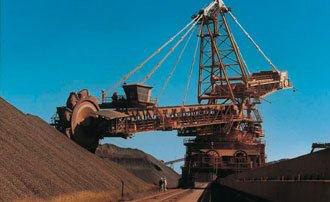
WA mining and petroleum sector breaks records
Western Australia's mineral and petroleum sector reached a new record value of $113.8billion during 2013, breaking the previous record of $108billion set in 2011.
Department of Mines and Petroleum Director General Richard Sellers said he was pleased that the State’s new record showed an increase of more than $11billion or 15 per cent compared to 2012.
He said the depreciation of the Australian dollar in 2013 had been a key factor in boosting the value of WA's mineral and petroleum exports.
“The weaker Australian dollar has helped to buoy the fall in commodity prices during the year, while the value of sales was also assisted by increases in some of the volumes of commodities sold,” Mr Sellers said.
Iron ore continues to be the State's most valuable export, accounting for $68billion (76 per cent) of the mineral sector's total sales, with continuing strong demand increasing the quantity sold in 2013 by 16 per cent to 556 million tonnes.
The Director General said gold was the second most valuable mineral commodity, with total sales of $8.7billion, representing 10 per cent of total mineral sales.
“Together, iron ore and gold accounted for more than $76billion (or 86 per cent) of all mineral sales in 2013,” he said.
“Strong demand from China, meant the iron ore sector achieved a record 556 million tonnes in exports, an increase of 16 per cent over the previous calendar year.
“However, despite increased output of almost three per cent, the average gold price was down by 16 per cent which contributed to a decrease of seven per cent in the sales value on the previous year.”
Alumina and nickel maintained long-held positions as WA's third and fourth most valuable sectors respectively with total nickel sales valued at $3.4billion, representing a 10 per cent decrease. In contrast the total value of alumina increased by nearly 13 per cent to $4.1billion.
Valued at a record $24.7billion in 2013, WA’s petroleum sector is the State’s second most valuable after iron ore.
Petroleum, which includes crude oil, condensate, LNG, natural gas and LPG (butane and propane), represented only a slight sales value increase of one per cent compared on the previous year, which was due to Pluto LNG coming on stream and countering falls in the sales volumes and total values of crude oil and LPG.
The overall value of base metals (copper, lead and zinc) increased by 16 per cent to $1.7billion in 2013 and the other category of vanadium, rare earths, manganese and industrial minerals, reached a total sales value of $1billion for the period.
Mr Sellers said this was further evidence that the resources sector was the backbone of the West Australian economy and was good indication of how strongly the industry was going.
Statistics on the value of Western Australia's mineral and petroleum sales are prepared biannually by the Department of Mines and Petroleum.
Fact File
- Mineral and petroleum sector reached a new record value of $113.8billion
- Iron ore continues as the State's most valuable export with sales of $68billion
- Gold the second-most valuable commodity
- More 2013 statistics are available on the department’s website under latest statistics released http://www.dmp.wa.gov.au/lateststatisticsrelease
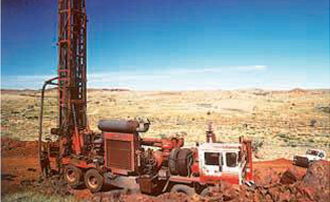
WA ranks as world's number one investment destination
Western Australia’s resources sector has been identified in the Fraser Institute Survey of Mining Companies 2013 as the world’s top-rated jurisdiction for investment attractiveness.
Department of Mines and Petroleum Director General Richard Sellers said the ranking showed that the many reforms underway at the agency were paying dividends and attracting international attention.
“With a score of 85.3 out of a possible 100 in the survey’s Investment Attractiveness Index, WA ranked number one in the world over Nevada (84.2) and Newfoundland and Labrador (81.3),” Mr Sellers said.
The State also received number one rankings for the Current Practices Mineral Potential Index, which determines whether under the current policy environment exploration is encouraged or not, as well as the Uncertainty Concerning Existing Regulations Index.
WA ranked second in the world in the Best Practices Mineral Potential Index and sixth in the Policy Perception Index (PPI). These two categories combined create the overall Investment Attractiveness Index category.
The Best Practices Mineral Potential Index ranks a region’s mineral potential with exploration investment potential, independent of policy restrictions. In this category WA and Nevada (0.82) were equal second to Alaska (0.83).
Other closest ranked Australian jurisdictions in this category included Queensland, 18th in the world (0.73) and Northern Territory, 24th (0.70).
In the Policy Perception Index, which the Fraser Institute says provides a ‘report card’ to governments on the attractiveness of their mining policies, Western Australia was ranked sixth in the world. This was up from 15th in 2012-13.
In the same category South Australia ranked 11th (82.9) and the Northern Territory was 13th (81.8), while in the Investment Attractiveness Index, the Northern Territory was ranked 17th with 74.7 out of a possible 100, followed by South Australia, 20 (73.8) and Queensland, 21 (73.5).
Western Australia also received encouraging comments in regard to managing Native Title approvals.
Other achievements include Legal System (4th) Regulatory Duplication and Inconsistences (7th), Political stability (8th), Quality of the geological database (11th), Socioeconomic agreements/community development conditions (13th) and top 20 rankings for Uncertainty concerning disputed land claims, Community Development Conditions and Certainty regarding environmental regulation.
The Fraser Institute annual Survey of Mining Companies 2013 is available at http://www.fraserinstitute.org/uploadedFiles/fraser-ca/Content/research-news/research/publications/mining-survey-2013.pdf.
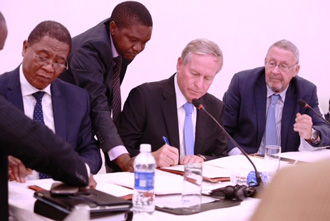
Premier Colin Barnett signs a MoU during the African trip.
Good policy the key to a strong resources industry
Looking at how Western Australia collaborates with African nations in regard to regulation of the resources industry was the focus of a week-long trip to Africa by Department of Mines and Petroleum (DMP) Director General Richard Sellers and Western Australian Premier Colin Barnett.
Mr Sellers said the trip in February had a particular focus on Western Australian policies surrounding issues such as royalties, titles and land access.
“This is with good reason. Western Australia has more than 120 years of developed policy that guides us,” he said.
Mr Sellers said there was recognition of the importance of having a solid policy framework.
“Good policy ensures not only continued investment, but that the benefit of the resources industry flows through to the community,” he said.
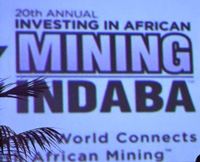
The trip also helped guide future collaboration between Western Australia and African countries and identified a number of training and development opportunities.
This was formalised by the Premier signing a Memorandum of Understanding (MoU) with the 19 African member nations of the Common Market for Eastern and Southern Africa (COMESA).
“The department will now work closely with the University of Western Australia, Murdoch, Curtin and other institutions as we look to develop this opportunity,” Mr Sellers said.
“The experience from this trip will also help shape future collaboration between Western Australia and other resource jurisdictions, and has highlighted the importance of shared knowledge and expertise in a global economy.”
Ministerial tour reinforces trading relationships in north Asia
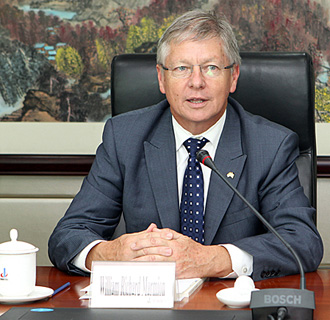
Minister Marmion spreads the word on Western Australia.
Mines and Petroleum Minister Bill Marmion and DMP Director General Richard Sellers were doing a lot more than being good neighbours on their recent official visit to Japan and China.
They were taking care of business.
Over five hectic days last month they talked to top-level industry and government representatives during 17 separate official occasions and visits.
“It’s hard to overstate the importance of the Minister making this trip so early in his tenure,” Mr Sellers said.
“Japan and China, along with Korea, are Western Australia’s major trading partners and the aim of visits such as this one is not only to build on already well established relationships, but encourage further investment.
“We knocked on a lot of industry and government doors trying to do just that.”
Mr Sellers said that DMP officers travelled to the three nations regularly to build relationships and encourage investment.
DMP’s annual target in China is the China Mining Conference, a Chinese Government sponsored event held in Tianjin in late October or early November.
“A department officer visits at least another one or two times a year for other events that may generate investment opportunities,” Mr Sellers said.
“Sometimes in association with the mining conference, either before or after, we’ve gone to another province or a series of provinces to hold investment seminars.
“Our focus is on relaying information about regulations, policies, how they can get information, particularly exploration information, from Australia.”
DMP officers travel to Japan about once a year, usually to run seminars in conjunction with other Australian States, and to Korea either annually or every second year.
The itinerary for this year’s Ministerial trip includes some big names in Chinese and Japanese commerce, industry and government.
Mr Sellers said he was greatly encouraged by the bullish and optimistic views expressed by Japanese corporations such as Mitsubishi (Japan’s largest), Sojitz and Marubeni, and China’s national oil and gas company, China National Offshore Oil Corporation (CNOOC).
“Sojitz is a great investor in Western Australia and their overall mood was optimism,” he said.
“They’re looking for further opportunities and are obviously happy with the relationship.”
Mr Sellers said Mitsubishi was enthusiastic about its joint venture in the Canning Basin with Buru Energy and Apache Energy and very pleased by early oil success from shale and tight gas.
“Marubeni was clearly very bullish,” Mr Sellers said of the corporation that picked up about 15 per cent of the financing of the Roy Hill project.
“Roy Hill is incredibly important to Western Australia’s iron ore industry,” he said. “It’s a project worth approximately $11 billion, plus financing costs, and that level of investment is great news for the WA economy.
“Marubeni have put a lot of money into Western Australia and they’re very keen on other investment opportunities here.
“Obviously we also promoted onshore gas and uranium, and we talked about the different steel making additives we produce here such as vanadium, nickel, magnesium and manganese.
“It was a very positive meeting and one of the highlights of the trip.”
Optimism was also high at the Ministerial team’s next stop, the Japan Bank for International Cooperation (JBIC), a policy-based financial institution that conducts lending, investment and guarantee operations.
“They did a lot of behind-the-scenes investment work on Roy Hill,” Mr Sellers said.
The Director General said that JBIC was one of a number of Japanese Government and corporate institutions that pointed out the need for a direct flight to Tokyo.
“This was a consistent theme through a lot of the meetings on the trip,” Mr Sellers said.
“Many people told us that it would be so much easier to do business when you can fly direct to Tokyo and not have to go through Hong Kong or Singapore.”
A lot of the discussion with JBIC was around energy issues that have been driven by the Fukushima disaster.
Coal has its own set of complexities and issues, so really you’re left with a future production of energy from gas if you can’t fill the gap through some other opportunity such as a nuclear solution.
“And that’s where the opportunities arise for uranium and shale gas.
“The pragmatic view is that they are likely to keep some of their nuclear capacity, but gas is going to be a big part of their energy mix well into the future.”
The team’s talks with the Japan Oil, Gas and Metals National Corporation (JOGMEC) were fruitful and addressed a focus on Australia’s eastern seaboard.
“When you look at their raft of projects in Australia, they often seem to looking to the east coast for metals when there are as good or better opportunities in Western Australia,” Mr Sellers said.
“If JOGMEC is not looking as much in Western Australia as we would like, that has a flow-on effect because it means the trading houses are less likely to be looking for commodities we can provide.”
Mr Sellers said that DMP was working on strategies to get JOGMEC more involved in Western Australia.
“We suspect one of the reason is because their offices are in the east,” he said.
“Whereas if they had an office in Perth, then a lot of interested people in West Perth would be able to knock on their door daily to attract interest.”
Mr Sellers said that the department was drafting a letter thanking JOGMEC for its hospitality and recommending that it considers relocating its office to Perth.
The Director General said JOGMEC’s importance to the State could not be overestimated and neither could the role played by the Ministry of Economy, Trade and Industry (METI).
“METI sets resources and industry portfolio policy and JOGMEC uses that policy to look for opportunities,” Mr Sellers said.
“METI has the equivalent of our Geological Survey, plus policy makers, and it works with business people.
“If METI looks at a potential new project and decides that it’s of a scale that’s going to be important, fits the policy of Japan and looks like it’s going to make some money because the geology stacks up, then they’ll pass it over to the trading houses.
“The Mitsubishis of this world don’t go into greenfields projects or new investments without some oversight or input from these two organisations, so whenever we go to Japan we make sure we visit them.”
Mr Sellers said that an official lunch with representatives of Japan’s steel mills confirmed that they viewed Western Australia as having a competitive advantage.
“They’re after cheaper product and they’ll be doing a lot of business with us in the future,” he said.
The mill representatives were highly interested in how magnetite projects were progressing in Western Australia.
“That could end up being good news for stalled projects such as Grange Resources near Albany,” Mr Sellers said of the mothballed magnetite operation at Wellstead, about 80mk east of the south coast port.
“One of the potential partners for Grange was Kobe, one of the mills we talked to.”
Flying the flag in China
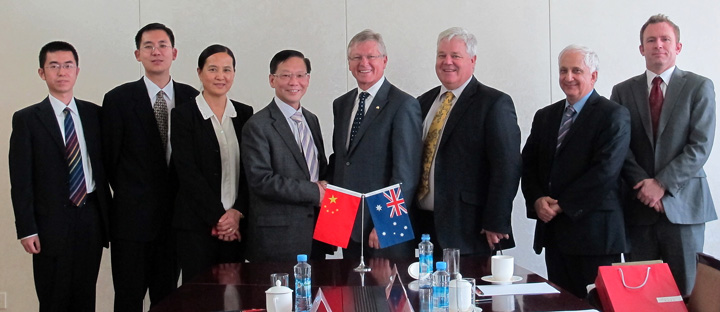
Minister Bill Marmion and Director General Richard Sellers are welcomed by Ministry of Land Resources (MLR) Director General Dr Jiang Jianjun.
Left: MLR officers and DMP Mineral Promotion Senior Manager Dr Gaomai Trench.
Right: Mr Marmion's Chief of Staff Colin Edwardes and Western Australia Trade Office Regional Director Nathan Backhouse.
Mines and Petroleum Minister Bill Marmion and DMP Director General Richard Sellers started the China leg of their recent north-east Asia tour by flying the flag for Western Australia in Hong Kong.
Their first stop was a visit to the DMP booth at Mines and Money Hong Kong 2014, the Asia-Pacific region’s premier networking event for mining investment and capital raising.
At a meeting later in the day with steel making giant Bao Steel it was clear that the company was enthusiastic about iron projects that could support the proposed Oakajee port development.
The meeting seems to have foreshadowed media reports suggesting Oakajee may be back on track due largely to an increasing Chinese interest in magnetite.
The market for Liquefied Natural Gas (LNG) was one of the key topics when the team attended an official function at the Australian Embassy the next day in Beijing, soon after arriving in mainland China’s capital.
“Clearly the growth in China, while not exponential, is a very steep curve,” Mr Sellers said.
“They will have to cut back on coal or make their coal power stations cleaner at some stage.
“They are building their nuclear capability, and they’ve got a fair bit of hydro but not too much base power in renewables.
“So, all of that means the use of gas is likely to increase.
“It doesn’t really matter where it comes from. If they take Russian gas, it means that someone else will want gas and that’s good for Western Australia.”
The following day, the massive magnetite development at Cape Preston near Karratha was the main topic of conversation during the team’s visit to CITIC Pacific Mining.
The Sino Iron project is the largest magnetite mining and processing operation in Australia and promises to deliver significant economic benefits to Western Australia.
“Cape Preston is CITIC Pacific’s flagship and that elevates the importance of maintaining and building on our relationship,” Mr Sellers said.
The team received a warm welcome at a meeting later that afternoon with the Ministry of Land and Resources.
“We always get a very good hearing at the Ministry,” Mr Sellers said.
“We have a long relationship with its Director General and officers. Our Geological Survey team meets with them regularly and I’ve built up a relationship over a number of years.”
The Director General said that DMP’s good relationship with the Ministry involved a great deal of close cooperation.
“An excellent example of the MOUs we have with the Ministry is our geoscience cooperation project with its China Geological Survey (CGS),” Mr Sellers said.
GSWA is now in the third year of a four-year project with CGS involving cooperative research based on geological surveys in the Archean Yalgoo–Singleton greenstone belt in the Mid-West region of Western Australia, and the Niujuanzi region in China’s Gansu Province.
The project’s aim is develop field and laboratory-based geoscience skills, and mapping and production techniques.
“We see this relationship as incredibly important and the visit by the Minister can only strengthen it,” Mr Sellers said.
The Karara project was at the forefront of talks with AnSteel, one of China’s biggest steel makers and iron ore miners.
Karara is the first major magnetite operation in the Mid West and is a joint venture between AnSteel and Gindalbie Metals.
The companies hope new regional environmental information will lead to reassessment of the conservation status of its iron ore holdings in the Mid West.
The final stop on the tour was a meeting with the China National Offshore Oil Corporation (CNOOC) the third-largest national oil company in China.
“They have been active in Western Australia for 40-plus years,” the Director General said.
“They’ve just taken out new large acreages and are spending a lot of money.
“It was a really positive meeting where they were quite bullish about further discoveries in oil and gas.”
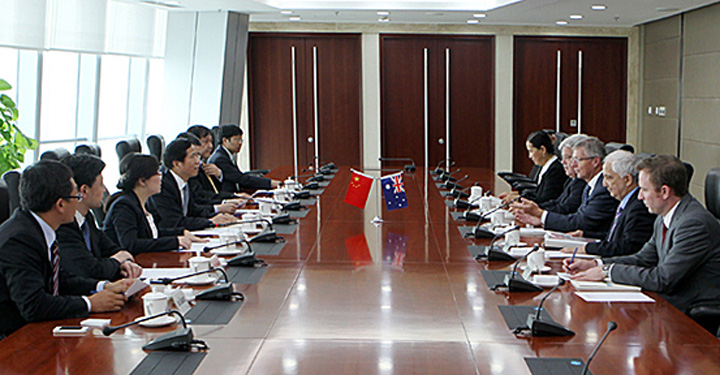
Left: Sinosteel Australia Managing Director Xiaoxuan Sun (David), Sinosteel Corporation Deputy General Manager Pan Wenliang,
Sinosteel interpreter Zhang Zhuo, Sinosteel Corporation Vice President Wu YongSheng, Ansteel Corporation VicePresident Shao Anlin,
CNOOC International Corporation Vice President Li Rongguang and CNOOC General Manager Australian Projects Chen Zhaoguang.
Right: Nathan Backhouse, Colin Edwardes, Minister Marmion, Director General Sellers and Dr Gaomai Trench.
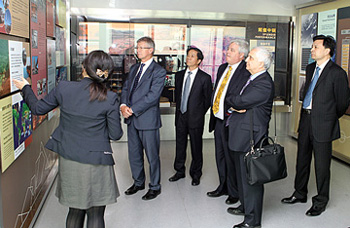
From left:
Zhang Zhuo, Minister Marmion, Wu YongSheng,
Director General Sellers, Colin Edwardes, Pan Wenliang.
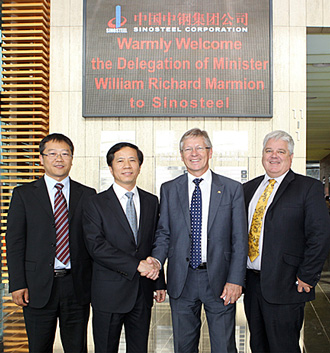
From left:
Xiaoxuan Sun ( David ), Wu YongSheng,
Minister Marmion, Director General Sellers.
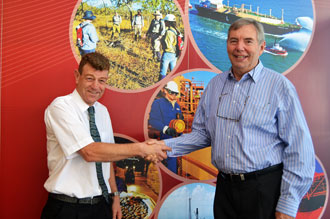
New Petroleum Division Executive Director Jeff Haworth, left,
is congratulated by his predecessor Bill Tinapple.
New Executive Director for DMP's Petroleum Division
Department of Mines and Petroleum (DMP) Director General Richard Sellers has welcomed the appointment of Jeff Haworth as the new Executive Director Petroleum.
“Jeff’s 38 years of experience in the resources industry, with more than 22 of them in the department, have given him the strongest of foundations,” Mr Sellers said.
He said that Jeff had been a pivotal force, helping drive and administer important tasks for the department.
“I am confident Jeff will continue to hold the department to account, applying the highest standards across the Petroleum Division in years to come,” Mr Sellers said when Jeff was appointed in November last year.
Jeff started his career in nickel mining near Norseman before moving to diamond exploration in the Kimberley during the diamond rush of the 70s.
In 1979, he ‘saw the light’ and moved into oil and gas exploration, working in Australia on the North West shelf and Browse projects, Barrow Island, and in the Northern Territory, Queensland and Victoria.
Jeff has worked overseas in the Norwegian sector of the North Sea, the Arctic Ocean, New Zealand and the United States.
He has vivid memories of his time working for Norsk Hydro as a contract well site geologist in the North Sea and Arctic Ocean.
“I particularly remember it being so cold I snapped a door handle off,” Jeff said.
“But I will never forget when I first arrived in the Arctic, watching men sunbathe on the helideck by the light of the midnight sun.”
In the US, Jeff was involved in gas analysis research that resulted in the publication of several papers on improved interpretation techniques.
This research is currently being used as an evaluation tool by Buru Energy in the Canning Basin as part of its determination of their basin-centred tight gas resources.
Since joining DMP in 1991, Jeff has been involved in the development of the Western Australia Petroleum Information Management System (WAPIMS) database, which was ranked number one in the world by the Fraser Institute.
His knowledge and experience in petroleum data has led to him providing advice to other countries in developing their systems.
This experience in data management played a key role last decade in developing Commonwealth regulations around data administration for the offshore sector.
Jeff is a member of the Society of Petroleum Engineers (SPE), the American Association of Petroleum Geologists (AAPG) and the Petroleum Exploration Society of Australia (PESA).
During his time with DMP Jeff has held the positions of Petroleum Geology Manager and Director of Technology, Petroleum and Geothermal.
In his new role, he is concentrating on the provision of consistent and transparent approvals processes for the Western Australian petroleum industry.
“My focus is to maintain and build upon Petroleum Division’s role in approvals and compliance monitoring of the industry and maintain world’s leading practice in resource management and regulation,” he said.
Jeff takes over the role from former Executive Director Bill Tinapple who retired late last year.
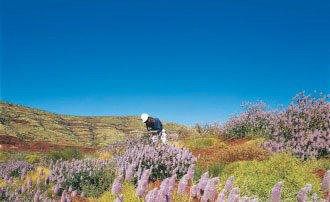
Environmental bond policy opens for comment
New policy guidelines outlining the use of unconditional performance bonds have been developed to provide clarity and certainty for industry before the compulsory introduction of the Mining Rehabilitation Fund (MRF) on 1 July 2014.
Introduced by the Department of Mines and Petroleum (DMP), the new policy guidelines outline circumstances where a bond may still be needed.
Executive Director Environment Dr Phil Gorey said that while the fund largely replaced the use of unconditional performance bonds, they were still needed in some circumstances.
“This includes projects that might have a high closure or rehabilitation risk, or for companies that have a poor record of complying with environmental or rehabilitation obligations,” he said.
Before the MRF was introduced, a mining operation could not start or expand its operations without an unconditional performance bond.
“These typically only covered 25 per cent of the cost of rehabilitation and any further costs were borne by taxpayers,” Dr Gorey said.
“Another issue was the fact that the bonds could only be used to rehabilitate the specific site that it was collected for.
"The MRF is intended to be the principle form of mining security applied in WA, although environmental bonds will be retained to protect the integrity of the fund.”
The guidelines also look at cases and criteria where bonds may be reduced or retired by the Minister.
“These guidelines give clarity and certainty to industry as we shift to fully implementing the MRF on 1 July 2014,” Dr Gorey said.
For more information about the guidelines go to http://www.dmp.wa.gov.au/MRF
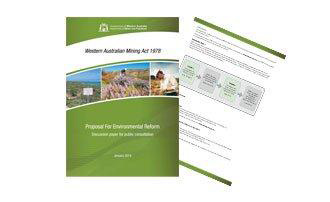
Proposed changes to clarify environmental responsibilities
A consultation paper outlining proposed changes to the Mining Act 1978 will clarify environmental responsibilities and further ensure the environmentally responsible development of Western Australia’s resources industry.
Environment Division Executive Director Dr Phil Gorey said Western Australia was well-placed to regulate the impacts of mining into the future.
“At present, the Mining Act limits our ability to introduce risk and outcomes-based environmental regulations,” Dr Gorey said.
“This was highlighted by a Ministerial Advisory Panel (MAP) that looked at environmental reforms for the mining sector in Western Australia.
“These amendments will clarify environmental obligations, increase transparency for industry and the community, and remove unnecessary duplication.
“It will also assist in proactively identifying and managing environmental impacts and risks, and clarify DMP’s role in environmental regulation.”
Dr Gorey said the act was functional and had been adequate up until now, but the proposal was about modernising environmental laws.
“While the main objective continues to ensure that the environment is protected, it will also ensure that business is not exposed to unnecessary costs,” he said.
“Importantly, these changes will mean that there is greater time spent by departmental inspectors at mine sites monitoring the environmental performance of miners, and less time trawling through unnecessary paperwork.”
The department will continue to consult with stakeholders on the detail of the amendments before they are implemented.
The consultation paper is available on the department’s website and includes information for making a submission.
To access this information go to www.dmp.wa.gov.au/environment
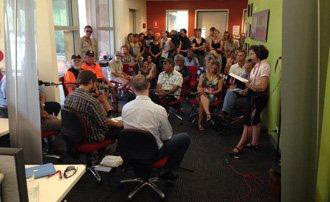
DMP Executive Director Environment Phil Gorey addresses
the audience in Broome.
Photo courtesy of ABC Kimberley.
Regional visits reveal community is seeking more information
Key community stakeholders in the mid and north-west of the State recently participated in informative discussions about Western Australia’s emerging natural gas from shale and tight rocks (shale and tight gas) industry and hydraulic fracturing (fraccing).
Representatives from the Department of Mines and Petroleum (DMP) visited Geraldton, Broome, Derby and Kununurra to provide presentations about how the department regulates shale and tight gas activities for this developing industry.
DMP Director General Richard Sellers said the visits were part of DMP’s commitment to engage early and often with local communities.
Mr Sellers said ongoing consultation with community stakeholders played an important role in guiding the department’s policy decisions and regulatory reform initiatives.
“During this early stage of shale and tight gas exploration, it has been incredibly beneficial for us to be regularly going out to regional communities to gain an understanding of local views about the industry,” he said.
Meeting with community stakeholders has revealed most people are seeking more knowledge about shale and tight gas to better understand the implications and benefits.
“In response, my department is working hard to make its regulatory processes more transparent and accessible to the public while also developing a suite of information sheets to address common community questions,” Mr Sellers said.
A common question asked during regional meetings was how does shale and tight gas differ from coal seam gas currently being developed in other jurisdictions?
“All are similar in that they are natural gas resources, however, where they are located, how they are extracted and the surface impacts are quite different,” Mr Sellers said.
“Coal seam gas resources are also found at much shallower depths than shale and tight gas and are commonly associated with aquifers which require dewatering to release the natural gas held in the coal seams by hydraulic pressure.”
During recent visits, DMP representatives met with the Shires of Wyndham/East Kimberley, Broome, Derby/West Kimberley and Irwin.
Several State Government regional agencies were also visited, including the Departments of Water, Aboriginal Affairs, Parks and Wildlife, Agriculture and Food, Lands and Main Roads.
The City of Greater Geraldton, Environs Kimberley, media outlets, KRED and the Nulungu Research Institute were other organisations that accepted invitations for briefings.
Broome forum
DMP’s Environment Executive Director Phil Gorey also recently took part in a live radio panel discussion about hydraulic fracturing in the Kimberley.
Hosted by the Broome ABC, the department was among a panel of six participating in the public forum at the end of January.
Dr Gorey, said the discussion, led by questions from listeners and audience members, allowed community members to gain a better understanding of hydraulic fracturing and how it’s regulated in Western Australia.
“With WA’s natural gas from shale and tight rocks industry in the early exploration and evaluation stages, it is important community members have confidence their concerns have been addressed and that the industry will be developed responsibly,” Dr Gorey said.
“Many of the community’s concerns around hydraulic fracturing focused on water protection and chemical use.
“There is also a strong desire within regional communities for this emerging industry to be developed in consultation with local people to ensure future projects co-exist with a diverse range of land values and uses.”
Dr Gorey said protecting the State’s water resources is of the highest priority for the State Government.
“Assessment processes for water protection include international standards for well design, baseline and ongoing water monitoring and rules for mandatory referral of proposals to the Environmental Protection Authority (EPA),” he said.
“If an activity is approved, petroleum companies must also publically disclose all chemicals used down a well – these are the strictest chemical disclosure laws in Australia.”
“DMP is also engaging with the petroleum industry to encourage a culture of companies engaging early and often with local communities,” Dr Gorey said.
“It is pleasing to see companies operating in WA are adopting this culture. In today’s society, I think most companies are aware that gaining a ‘social licence to operate’ is just as important as gaining the regulatory licenses required.
“Petroleum companies need to be open and transparent with communities about their proposed activities and, where appropriate, involve community members in their decision-making processes.”
For more information about the State’s emerging shale and tight gas industry, please visit www.dmp.wa.gov.au/shaleandtightgas
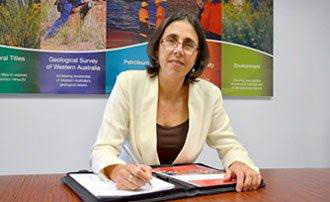
Deputy Director General, Strategic Policy Michelle Andrews
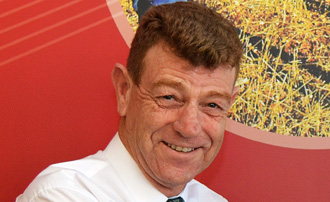
Petroleum Executive Director Jeff Haworth
DMP top executives join key industry groups
Department of Mines and Petroleum Director General Richard Sellers has welcomed the appointments of executive staff to important industry organisations.
Deputy Director General, Strategic Policy Michelle Andrews has been appointed to the Minerals Research Institute of Western Australia, while Petroleum Executive Director Jeff Haworth has joined the World Shale Council.
Mr Sellers said Ms Andrews’ appointment was a welcome addition to the seven member board, who will be able to make use of the knowledge and skills she has gained during her extensive experience working in State Government agencies.
The institute helps fund research projects that encourage development of the minerals and energy industries within Western Australia.
The new team will bolster the institute’s key objective of promoting the long-term international competitiveness of WA’s minerals industry through top quality research.
“I also believe Mr Haworth’s invitation to join the World Shale Council is a tribute being undertaken by my department in this area, and a reflection of the international respect we are gaining,” Mr Sellers said.
The World Shale Council objective is to bring together world leaders in the field to promote and extend best practices, knowledge transfer and expertise in shale exploration and production from policy, regulatory and operational aspects through to the latest technology breakthroughs.
The other board directors of the Minerals Research Institute of Western Australia are:
- Dr Peter Lilly - Senior Manager Research and Development with BHP Billiton. Dr Lilly has 34 years of varied experience in mine planning and design, geotechnical engineering, consulting engineering, applied research and academia;
- Helen Cook - Non-executive director for Private, Public and Government Boards. Ms Cook has more than 20 years corporate and commercial experience in professional services, specialising in the energy and natural resources industry;
- Stedman Ellis - Chief Operating Officer Western Region, Australian Petroleum Production and Exploration Association. Mr Ellis has experience at senior levels in a wide variety of policy, government and advocacy roles related to the mining and petroleum industries;
- Dr Phillip Lockyer - Non-executive director for a number of mining companies. Dr Lockyer has more than 40 years of technical and management experience in the minerals industry;
- James McClements - Managing Partner at Resource Capital Funds. Prior to launching Resource Capital Funds, Mr McClements was a natural resources sector banker with N.M. Rothschild in Australia and USA; and
- Dr Andrew Shook - General Manager Human Systems Integration in Rio Tinto’s Technology and Innovation group. Dr Shook has held a wide variety of different positions in the mining and processing industries over the past 25 years.
Meanwhile, Mr Haworth will join the following members of the World Shale Council:
- Dr Ronald A. Sills, Founding Director XTL & DME Institute
- Dr Attila Aydemir, Advisor for Unconventional Resource Projects, TPAO
- Don Schofield, President, SAPEX
- Hu Wenrui, Former Vice president, PetroChina, President of China Petroleum Enterprise Association
- Jeffrey Meisenhelder, Vice President Unconventional Resources Group, Schlumberger
- Andrew Place, Interim Director, Center for Sustainable Shale Development
- Rick Smead, Managing Director—Advisory Services, RBN Energy LLC
- Dr John Decker, Principal Geologist, Petroleum Agency SA
- Jin Zhijun, President of E&P Research Institute, SINOPEC
- Igor Zaitsev, Advisor to the Chairman, Nadra Ukrayny
More information about the World Shale Council can be found at its website at http://europe.world-shale.com/2014-event/world-shale-council/
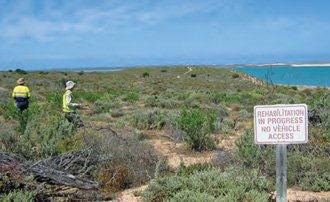
Independent advice for rehabilitation funding
An independent advisory panel that will provide advice about administration of the Mining Rehabilitation Fund (MRF), legacy sites and rehabilitation priorities has been recently established.
Inaugural members of the MRF Advisory Panel, Michael Slight, Julie Hill, Charmian Barton, John Gardner and Phil Scott, have been appointed for a two year period and will provide advice to the Director General of the Department of Mines and Petroleum (DMP), Richard Sellers.
Mr Sellers said the five-member panel had experience that covered a broad range of expertise including mine closure, planning, costing and operation, as well as financial management and legal experience.
“These five individuals bring a wealth of experience and will be well-suited to providing me with expert, independent advice,” he said.
The panel will help identify abandoned mines, prioritise sites for rehabilitation, determine expenditure and provide guidance in the administration of the fund.
The MRF largely replaces the previous bond system and will better cover rehabilitation costs, free up capital for companies and encourage early and ongoing rehabilitation of the State’s mine sites.
WA’s MRF was developed after almost three years of research, consultation and policy development.
“More than $220 million in bonds have been retired since the MRF was introduced on a voluntary basis,” Mr Sellers said.
The fund will become compulsory from 1 July 2014.
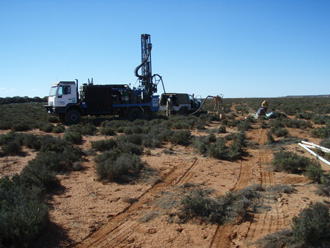
Aircore drilling at Toro's Wiluna site.
DMP facing regulatory challenges for emerging uranium industry
Following the State Government’s decision to lift the ban on uranium mining in 2008 the Department of Mines and Petroleum (DMP) has granted leases to about 46 companies focusing on uranium.
As of February 2013, WA has known resources of 234,000 tonnes of uranium in about 30 separate deposits.
“In preparation for the first uranium mine in the State becoming operational, my department is taking steps to ensure that stakeholders are engaged and provided with a wide range of information in appropriate formats regarding the uranium industry, the government’s activities in regulating the industry and the projects operating in WA,” Mr Sellers said.
“The department is keen to help foster the responsible growth of a uranium industry in the State and is focused on its regulatory duties in the key areas of protecting workers, public health and the environment.
He said DMP had regulatory processes in place for when the demand for uranium improves.”
“This will ensure that Western Australia can play a significant part in the supply of uranium, as countries increase their utilisation of nuclear power to reduce reliance on fossil fuels,” Mr Sellers said.
“As uranium projects develop, my department has been encouraged by the work the industry continues to do with the local community, especially around Indigenous engagement,” he said.
However, getting the go-ahead for a uranium project in WA is no simple task.
Companies must seek at least 38 separate approvals involving 11 State and Commonwealth agencies governed by 12 different pieces of legislation before construction can begin.
DMP’s regulatory requirements are rigorous and focus strongly on radiation safety.
In January 2013, the Department and the Radiological Council in Western Australia signed a Memorandum of Understanding (MoU) on Radiation Safety for Mining Operations Working Arrangements.
The MoU formalises a partnership responsible for regulation at the highest international levels to ensure that risk from uranium mining to workers, communities and the environment is minimised.
DMP’s established measures to ensure radiation safety for workers and communities living near mine sites and transport routes include approval of a Radiation Management Plan before any operation involving the mine, processing plant and transport arrangements.
“Uranium exploration and mine workers are subject to a broad range of safety regulations, protocols and practices, and a more extensive health monitoring regime than most other mine workers,” the Director General said.

Agreement to reduce green tape welcomed
Western Australia has confirmed its commitment to a one-stop shop for environmental approvals, after signing a Memorandum of Understanding with the Commonwealth Government at a recent Council of Australian Governments (COAG) meeting.
The MOU sees WA join other states in agreeing to work towards a bilateral agreement with the Commonwealth Government over the next 12 months.
Premier and Minister for State Development Colin Barnett welcomed the development.
“The signing of the MOU is a major step forward in establishing a more efficient process for approvals without compromising the stringent environmental assessments that are in place,” Mr Barnett said.
Bilateral agreements will enable State and Territory Governments to undertake environmental assessments under the Environmental Protection and Biodiversity Conservation Act 1999 (EPBC Act) in parallel with state based approvals processes.
“If we can achieve what we are working towards it will significantly reduce duplication between State and Federal environmental approvals processes,” the Premier said.
It is expected that the establishment of bilateral agreements will result in improved efficiencies in the process, while maintaining the level of protection under the EPBC Act.
The policy is designed to deliver more streamlined and cost-efficient approvals by reducing overlap between the states and the Commonwealth on a project-by-project basis and enabling a focus on strategic outcomes for biodiversity.
“I look forward to making more progress on this and other productivity measures in the coming months,” Mr Barnett said.
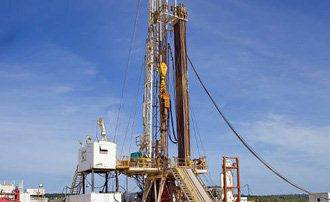
Draft Resource Management and Administration Regulations
The first of a set of two Resource Management and Administration Regulations for petroleum and geothermal activities has been released by the Department of Mines and Petroleum (DMP) for stakeholder comment.
The draft Petroleum and Geothermal Energy Resources (Resource Management and Administration) Regulations 2014, which cover the WA onshore petroleum sector and State waters, will be opened for a three month comment period.
The closing date for comment submissions is 5:00pm WST, 30 May 2014.
When finalised, these regulations will provide a risk-based management scheme for the exploration for, and production of, petroleum and geothermal energy resources.
A range of resource management and administration matters, are covered by the regulations, including well management plans for the approval of all drilling activities (including shale and tight gas), notification and reporting of discovery of petroleum; field development plans and approvals of petroleum recovery.
The regulations ensure that adequate information will be provided about all aspects of exploration, discovery, development and production operations in relation to petroleum and geothermal energy resources. They also outline confidentiality periods applicable to technical data submitted by title holders.
This information ensures that petroleum and geothermal energy resources operations are carried out in a proper manner and are compatible with the optimum long-term recovery of petroleum and geothermal energy resources.
In the case of operations relating to the exploration or recovery of petroleum, they also ensure work is conducted in accordance with good oilfield practice.
This supports the safe and efficient management of the resources and assists with optimising the long term benefits to the Western Australian community.
Supporting Explanatory Notes and Guidelines have also been prepared for the regulations.
The onshore resource management and administration regulations will form the third and final part of the suite of regulations that commenced in 2010 with the introduction of two onshore safety regulations - Petroleum and Geothermal Energy Resources (Occupational Safety and Health) Regulations 2010 and the Petroleum and Geothermal Energy Resources (Management of Safety) Regulations 2010.
In 2012 onshore environment regulations commenced with Petroleum and Geothermal Energy Resources (Environment) Regulations 2012.
The petroleum safety and environment regulations currently in force are complementary legislation and should be read in conjunction with the draft resource management regulations to assist in understanding the WA petroleum legislative regime.
The last phase of the resource management project is to complete the Petroleum (Submerged Lands) Resource Management and Administration Regulations 2014, tocover submerged lands in State waters adjacent to the coast of WA.
These regulations will be drafted after the public and stakeholder consultation process for the onshore regulations has been completed.
All submissions will be posted to DMP’s website, unless an author specifically requests otherwise. Please indicate clearly on the front of your submission should you wish it to be treated as confidential, either in full or part.
Any request under the Freedom of Information Act 1992 for access to a submission marked ‘confidential’ will be determined in accordance with the Act.
For further information go to http://www.dmp.wa.gov.au/rmar
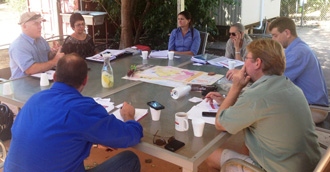
Stakeholder engagement now part of DMP culture
Since establishing a specialised Reform Group four years ago the Department of Mines and Petroleum (DMP) has made many achievements.
Under the directive of the then recently appointed Director General Richard Sellers, the Reform Group had a clear mandate to embed stakeholder engagement into the department’s culture and its core business.
Mr Sellers said he was pleased the success of DMP’s reforms was highlighted in the Public Sector Commission’s State of the Sector Report 2013 in the Governance and Innovation section, and has set a new benchmark for how government agencies consult with stakeholders.
The creation of a Reform Group was sparked by a State Government decision in 2009 to create a framework of best practice safety regulation for Western Australia’s resources sector, following a spate of mining fatalities.
The group’s brief was to project manage the development and implementation of a risk-based approach to safety reform, working with the agency’s Resources Safety Division (RSD) and external stakeholders and included the introduction of the Mine Safety and Inspection Levy.
“A critical role for the Reform Group during this period was managing a Ministerial Advisory Panel (MAP) involving representatives from industry, unions and the regulator, and the four working groups it established,” Mr Sellers said.
As part of the formal stakeholder engagement process, briefings on the reforms were also held across the State, including some held jointly with industry peak bodies, and provided an opportunity for regional communities to learn early on in the process what changes were being considered.
Two years later, the group had to shift its focus to concentrate on to environmental regulation, and in particular, the Mining Rehabilitation Fund (MRF).
This involved extensive consultation with stakeholders to develop a new model of environmental regulation and the drafting of legislation for the MRF within six months.
As with safety reform, the department had the challenge of working with a Ministerial Advisory Panel representing the key stakeholders.
By the end of the six months the panel had a report for the Minister with recommendations for clear environmental objectives, efficient regulation, improved transparency and communications and an effective compliance framework.
Mr Sellers said the key to getting the MRF legislation in place and on schedule was to manage stakeholder expectations so that the department could get the system in place quickly, while ensuring there was time to get processes and procedures in place.
The successful strategy saw the introduction of a voluntary 12-month period for miners to choose whether to opt in early.
“My department’s Environment Division has now taken up the challenge of getting the systems and processes in place and has established a Reforming Environmental Regulation Advisory Panel (RERAP) to ensure there is continued stakeholder engagement in the development and implementation of the Ministerial Advisory Panel (MAP) recommendations,” Mr Sellers said.
“Due to its success I have called for other parts of the organisation to adopt this approach.”
As part of the continued consultative process a new MAP has been established at Resources Safety to develop and implement major safety legislation amendments.
DMP’s Community Engagement Manager, Silvana Traini is now working to build capacity for early engagement across the various business units.
She said heightened community interest in the emerging shale and tight gas sector has resulted in a strong commitment by the department to engage with affected communities early and often.
“The community is seeking more knowledge about this industry to better understand the implications and benefits,” Ms Traini said.
“Since 2011, DMP officers have met with a range of stakeholders across the State. A strong focus of the department’s community engagement efforts has been in the Mid West and Kimberley regions, where some shale and tight gas exploration activities are already occurring.”
She said the ongoing consultation with a wide range of stakeholders including local governments, land holders, and environmental and regional community groups and organisations is shaping the regulatory framework for this emerging industry.
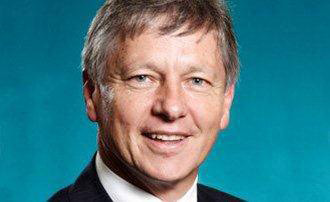
The Ministerial Advisory Panel (MAP) will report to
Mines and Petroleum Minister Bill Marmion.
Ministerial Advisory Panel established to focus on Safety Legislation Reform
As part of the continued consultative process at the Department of Mines and Petroleum (DMP) a new Ministerial Advisory Panel (MAP) has been established at Resources Safety to develop and implement major safety legislation amendments.
“The first MAP meeting was recently held with former BHP Billiton External Affairs Vice-president Ian Fletcher appointed as the independent chairperson,” DMP Director General Richard Sellers said.
He said Mr Fletcher has also recently been appointed as the chair of the State Government’s Regional Development Council (RDC).
“The panel is made up of representatives from government, industry groups and unions with the aim of increasing stakeholder engagement and face-to-face briefings to ensure all stakeholders are informed and have the opportunity to provide input to the process of legislative change,” Mr Sellers said.
“The panel will provide advice to the Minister for Mines and Petroleum Bill Marmion on the safety legislation reform process, and also feed information back to their respective organisations.”
It is anticipated that the panel will operate until December 2014 and that meetings will be held bi-monthly.
”The objective of the panel is to deliver a best practice safety regulatory regime for the Western Australian resources sector based on practical risk management,” Mr Sellers said.
“This will take due account of current reforms in occupational health and safety regulation which are part of the Council of Australian Governments (COAG) Business Regulation and Competition reforms.
“Our aim is to deliver a best practice legislative model based on cost recovery thereby ensuring efficient service delivery to industry.”
Advice to the Minister will focus on the following:
- Legislative reform and the development of guidance material to support these changes.
- Strategies which will increase the safety capabilities of both industry and the regulator.
- Performance reporting criteria and appropriate governance arrangements.
- Communication and implementation of safety reforms, to ensure a common understanding.
Ministerial Advisory Panel members
- Mr Ian Fletcher Independent Chairperson
- Mr Simon Ridge Executive Director, Resources Safety Division, Department of Mines and Petroleum (DMP)
- Mr Greg Stagbouer Director, Australian Drilling Industry Association (ADIA)
- Mr Kevin Wolfe Business Development Manager, Monadelphous (representing Australian Pipeline Industry Association- APIA)
- Ms Karin Lee Policy Advisor, Chamber of Commerce and Industry WA (CCI WA)
- Ms Miranda Jane Taylor Senior Policy Advisory, Australian Petroleum Production and Exploration Association (APPEA)
- Mr Richard Kern Regional Manager Asia Pacific Newmont (representing Chamber of Minerals and Energy WA -CMEWA)
- Mr Justin Fromm Senior Policy Officer, Association of Mining and Exploration Companies (AMEC)
- Mr Stephen Price Secretary, Australian Workers Union
- Mr Glenn McLaren State Organiser, OHS Advisor, Australian Manufacturing Workers’ Union (AMWU)
- Mr Gary Wood Secretary, Construction Forestry Mining and Energy Union (CFMEU) Mining and Energy Division WA District
- Mr Chris Oughton Director, Kwinana Industries Council (KIC)
- Mr Michael Tooma Partner, Norton Rose Fulbright
- Mr Nick Zovko Regulatory Policy Manager, Plastics and Chemicals Industries Association (PACIA)
- Mr Lew Pritchard General Manager Business Development, DMP
- Ms Jennifer Shelton Principal Policy Officer, DMP
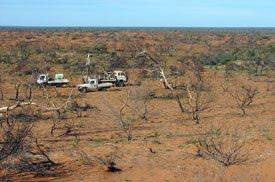
Round 9 Co-funded Drilling Program launched
Round nine of the State Government’s highly successful Co-funded Exploration Drilling Program, administered by the Department of Mines and Petroleum (DMP), was launched in February.
“The Co-funded Drilling Program provides incentives to drill in underexplored areas to ensure the continued economic prosperity of the State’s resources industry, particularly in the current financial environment, and boosts WA’s reputation as an attractive investment destination,” DMP Director General Richard Sellers said.
As the flagship program of the Exploration Incentive Scheme (EIS), the program offers refunds of up to 50 per cent of direct drilling costs to explorers who have been successful in the competitive application process.
“The State Government has shown a real commitment to explorers, and funding under the EIS will reach approximately $130 million by 2016-17,” Mr Sellers said.
The EIS, funded through the State Government’s Royalties for Regions program, helps to stimulate increased private sector resources exploration and partnerships across Western Australia.
“There is no doubt the scheme not only increases awareness of Western Australia’s geology, but also boosts employment opportunities and encourages new mineral and energy discoveries,” he said.
Co-funding is capped at $150,000 for general multi-hole applications, $200,000 for a single deep hole application and $30,000 for a prospector application.
Established five years ago, the competitive program offers two rounds of co-funding a year and has already assisted various discoveries, including the Oxley potash, Nova nickel, Handpump gold, Yeneena copper and East Tropicana gold deposits.
Mines and Petroleum Minister Bill Marmion recently announced another successful Co-funded Drilling Program result that had the potential to increase the mine life, royalties and jobs at the Andy Well gold project, near Meekatharra.
The current round, which has now closed, offers support to innovative exploration drilling programs undertaken in the 2014-15 financial year.
It is expected successful applicants will be announced in June.
Mr Sellers said more than 100 projects applied for funding in the previous round, which resulted in $5 million being offered to 46 drilling projects, including three prospecting projects.
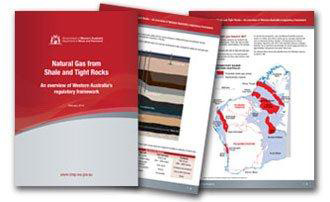
Outline for DMP's regulatory vision for shale and tight gas industry released
Western Australia’s regulation of natural gas from shale and tight rock (shale and tight gas) resources has been outlined in an overview document released by the Department of Mines and Petroleum (DMP).
The document, Natural Gas from Shale and Tight Rocks – An overview of Western Australia’s regulatory framework, was developed for community members interested in gaining a better understanding of this emerging industry.
DMP Director General Richard Sellers said the overview included information on what shale and tight gas was, where it’s located in WA and what exploration activities have already occurred to date.
“It also details what shale or tight gas activity looks like on the surface and the potential footprint of a producing natural gas field,” he said.
Mr Sellers said the potential development of a shale and tight gas industry for WA had attracted broad community interest in regard to the extraction using horizontal wells and hydraulic fracture stimulation (fraccing).
“The overview addresses frequently asked community questions about the process of hydraulic fracturing, including water use and protection,” Mr Sellers said.
“The State’s legislative framework for the industry is also featured in the overview to provide an understanding of the robust, multi-agency assessment process in place for shale and tight gas proposals.”
The department’s work with communities indicates most community members are seeking more information about these processes in order to develop an informed opinion.
The overview details the assessment process for a shale or tight gas activity, including international standards for well design, baseline and ongoing water monitoring and public disclosure of all chemicals used down a well.
To view the overview document go here.
For more information on WA’s emerging shale and tight gas industry, please visit www.dmp.wa.gov.au/shaleandtightgas